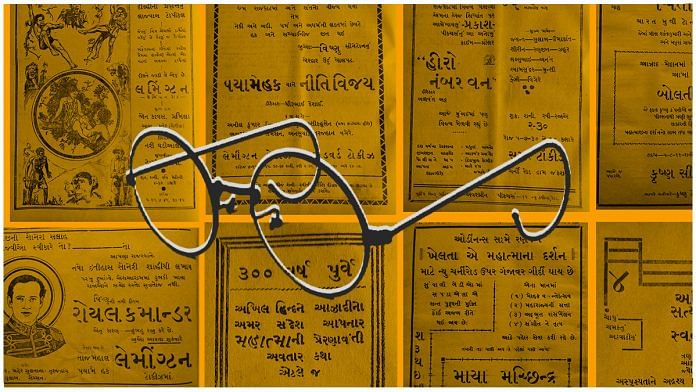The advent of cinema and the rise of Mohandas Karamchand Gandhi happened almost parallelly in India. However, Gandhi would place cinema with other vices like ‘race-course, drink-booth and opium-den’ as the “enemies of the society”. (10 March 1929. Collected Works of Mahatma Gandhi, Vol.40, Page 125).
During a conversation with Jayaprakash Narayan and other socialists, Gandhi said, “If I had my way, I would see to it that all the cinemas and theatres in India were converted in to spinning halls and factories of handicrafts of all kind.” (27 May 1947. CWMG Vol.88, Page 17)
But Gandhi’s disdain for cinema didn’t prevent the fledgeling Indian film industry from using his name and his values — directly or indirectly — for publicising movies. One way of doing this was to show a short documentary on Gandhi in the middle of a film, as is evident in the following advertisement of the 1933 film Chintamani. Its promotional write-up read: “Talkie film of a speech Mahatma Gandhi gave at Azad Maidan, which has been exclusively produced by Krishna Company. Also running is the film of his great reception from steamer Pilsna to Mani Bhuvan. Do come with family to have the privilege of Mahatmaji’s darshan and listen to his clear speech.”
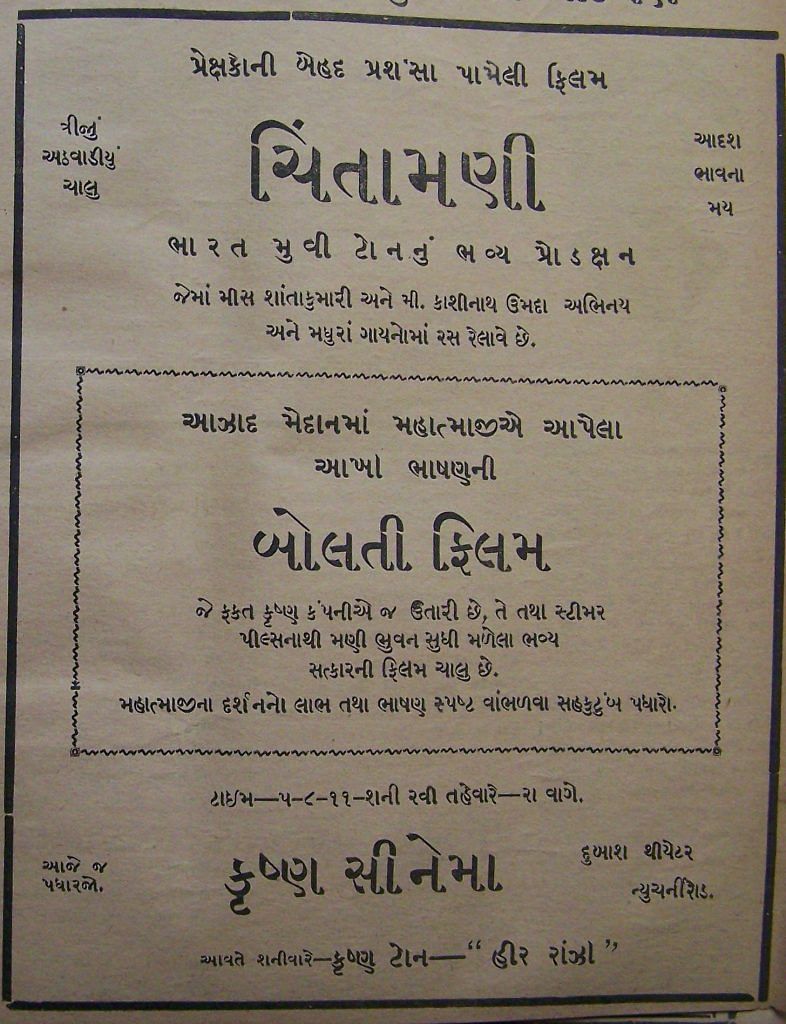
Also read: You don’t know Gandhi if you don’t know about his 3 Gujarati comrades
One of the most bizarre film ads featuring Mahatma Gandhi was that of Jungle King, released in 1939.
Quite apparent from its name and the accompanying visuals, it must have been a desi version of Tarzan, made under the banner of action film production house Wadia. Yet, the ad claimed “the film is an unparalleled ‘topical’ on Gandhiji’s activities in Delhi” with Gandhi’s name featured prominently.
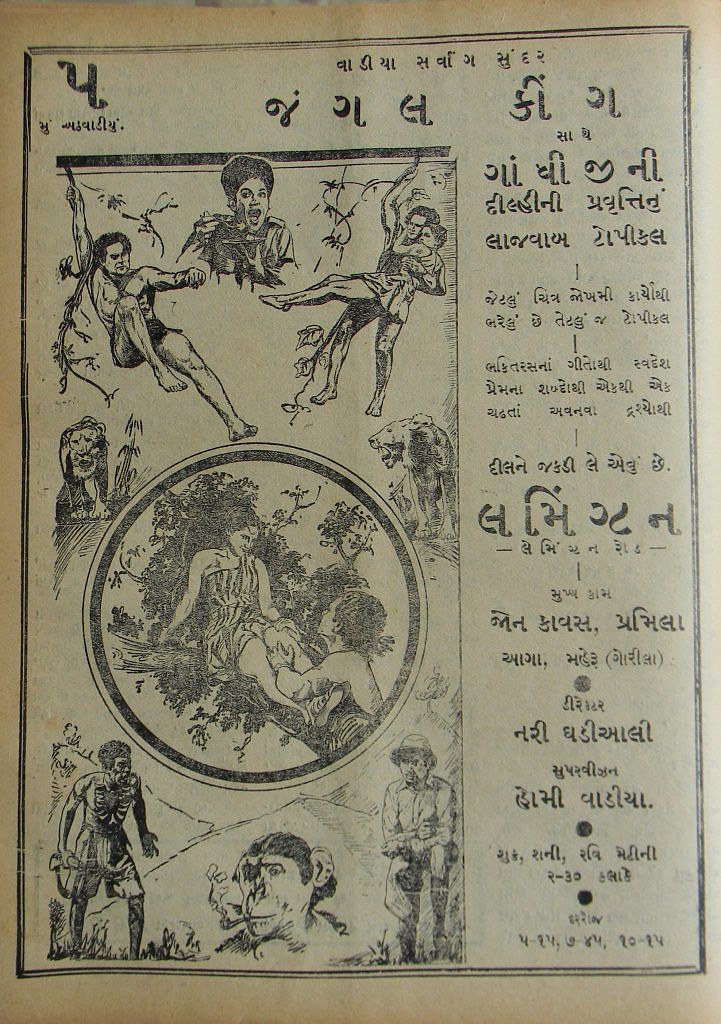
Much before David Dhawan and Govinda’s ‘Number One’ films became a household name, there was the Prakash Pictures-produced Hero No. 1 in 1939 that people know little about. Prakash Pictures, owned by Gujarati brothers Vijay and Shankar Bhatt, was a prominent film production company that made Ram Rajya in 1943 — the only Hindi film Gandhi watched, but did not like at all. The advertisement for Hero No. 1 displayed Gandhi’s name at the top, underlining it. Its tagline was: “A unique crime thriller based on the same principle on which Mahatma Gandhiji secured victory at Rajkot’. The ‘thriller’ ad also proclaimed that the film was about the “adventures of a ten-year-old boy”, and “cheats eluding policemen”.
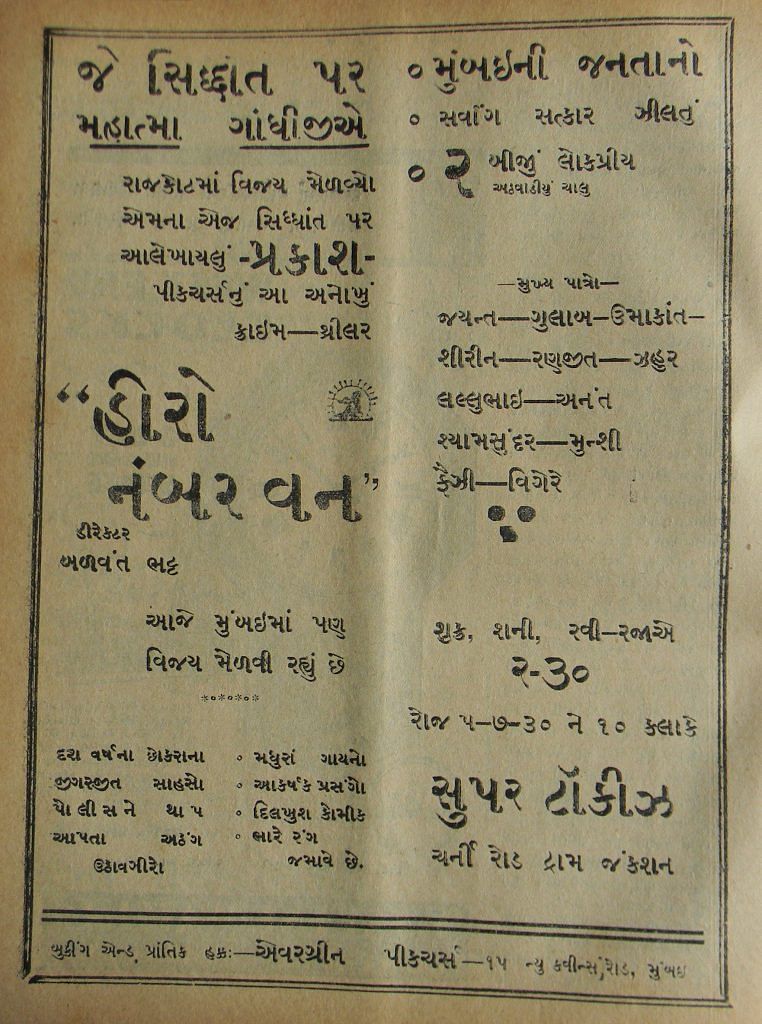
Also read: Mahatma Gandhi hated movies, but watched 2 in his lifetime
The 1938-39 Rajkot episode was not one of the most glorious events of Gandhi’s public life. But this did not deter film publicists from using it to advertise their movies. An advertisement for “a terrific Urdu talkie” in 1939, namely Payam-e-Haq a.k.a. Neetivijay reads: “Just like the saint became victorious in the battle of truth and untruth at Rajkot, right and truth always win at the end in the battle of good and bad, dharma and adharma.”
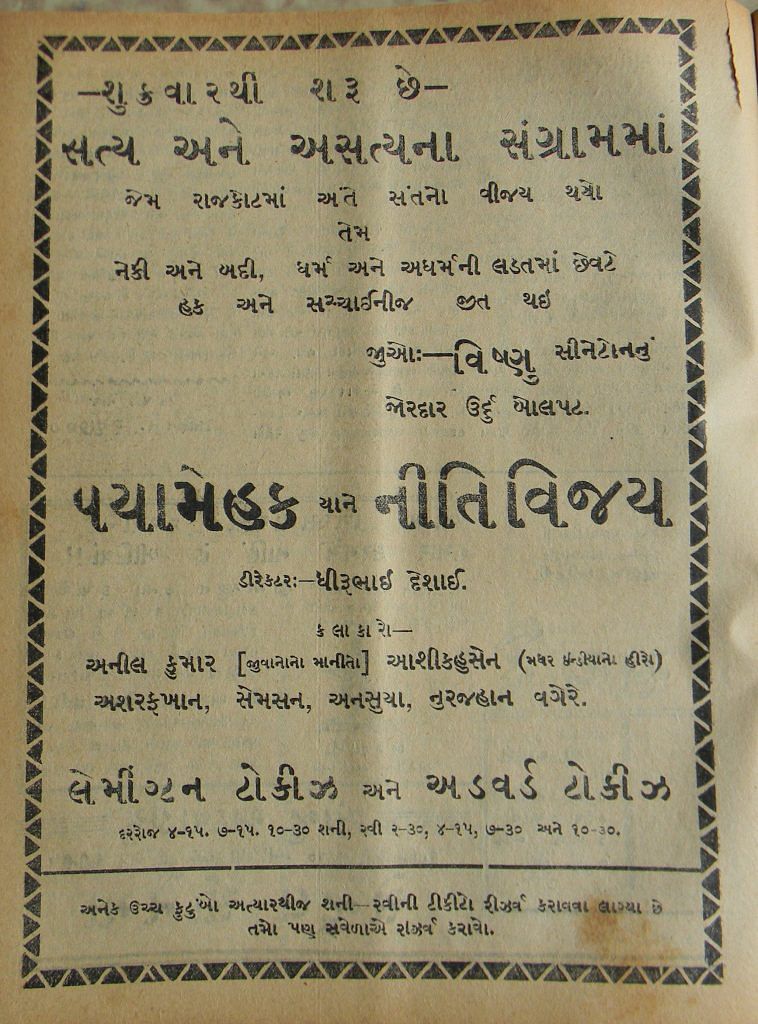
Many princely states were hostile towards Gandhi’s satyagraha movement and his ways. The advertisement of the 1938 film Royal Commander targeted the princes and said: ‘If the princes accept golden advice of Mahatmaji, new history of Princestan will be written with golden ink. But indulged in luxury, they can’t find the true path.” The film claimed that it “portrays the exact reason for it”.
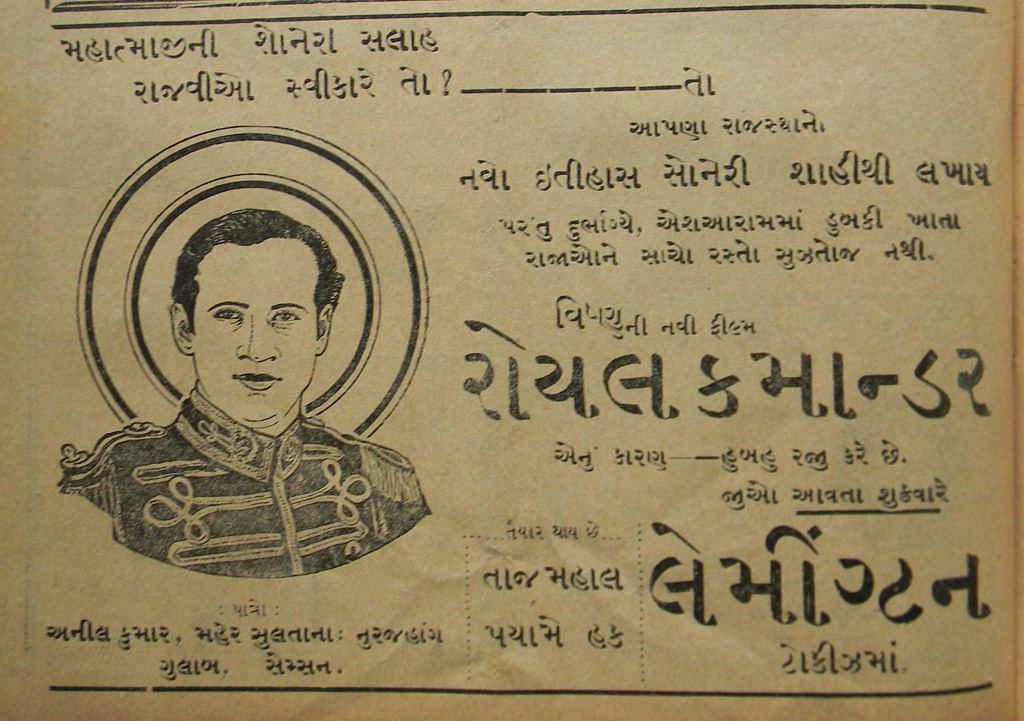
Few publicists played smart by dragging Mahatma Gandhi’s name in for film promotions even when their movies had nothing to do with him. An example of this is an advertisement for the movie Maya Machhindra (1932) that screams: “There’s huge rush for darshan of that Mahatma fighting against the ordinance”. Obviously, the original story of Macchindranath can’t have an ordinance in it. But the words ‘Mahatma’ and ‘ordinance’ were enough to ring a bell in the minds of the readers in terms of what the advertisement was referring to.
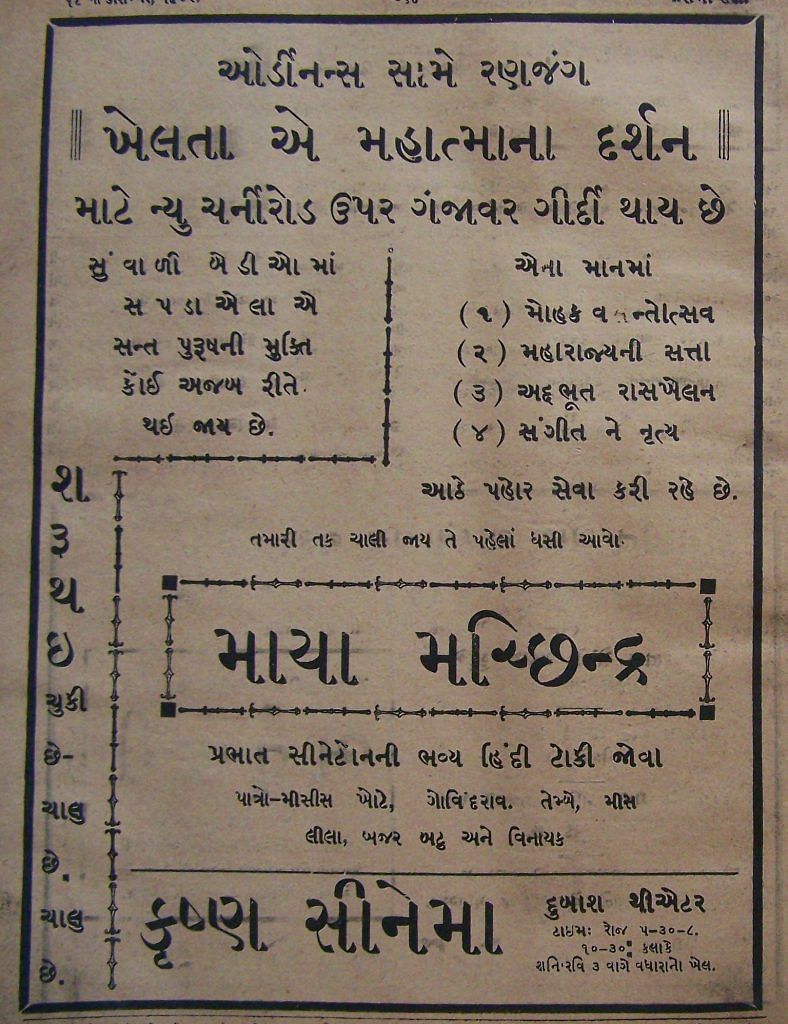
Similarly, the 1939 film, Shiva Janma, (meaning birth of Lord Shiva) was presented as the “great inspirational story of a MAHATMA who gave immortal message of freedom to entire India 300 years back”. The word ‘Mahatma’ has been highlighted in the headline so that readers don’t miss the parallel between Gandhi and Lord Shiva.
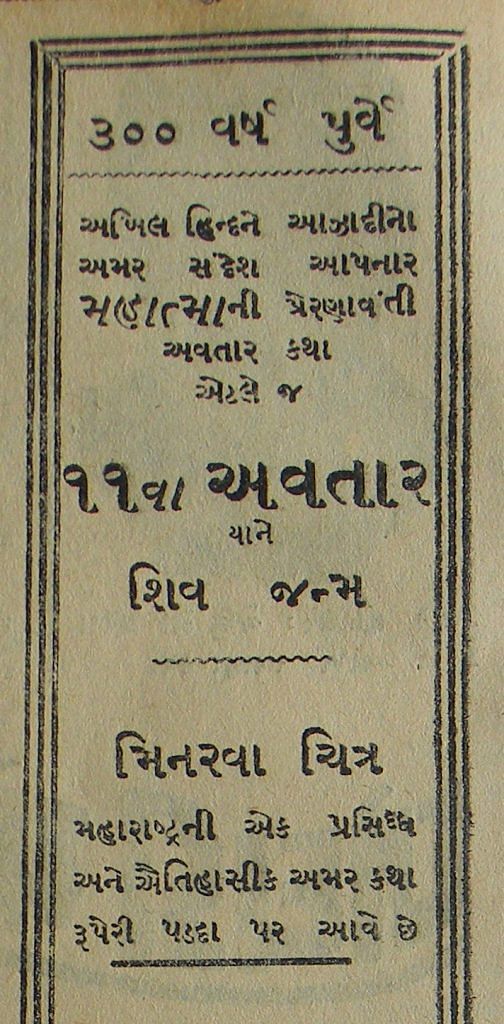
Also read: The two family members of Mahatma Gandhi who dared to disagree with him
The social climate in the country brought about by Gandhi’s movement against untouchability inspired many conventional-formula films. One such film was Achhut in 1940. Made both in Hindi and Gujarati by the leading film production company of that time, Ranjit Movietone, the film in one of its advertisements highlighted three virtues that Gandhi propagated till his last breath: Ahimsa (non-violence), Satyagraha (truth) and Swatantra (freedom).
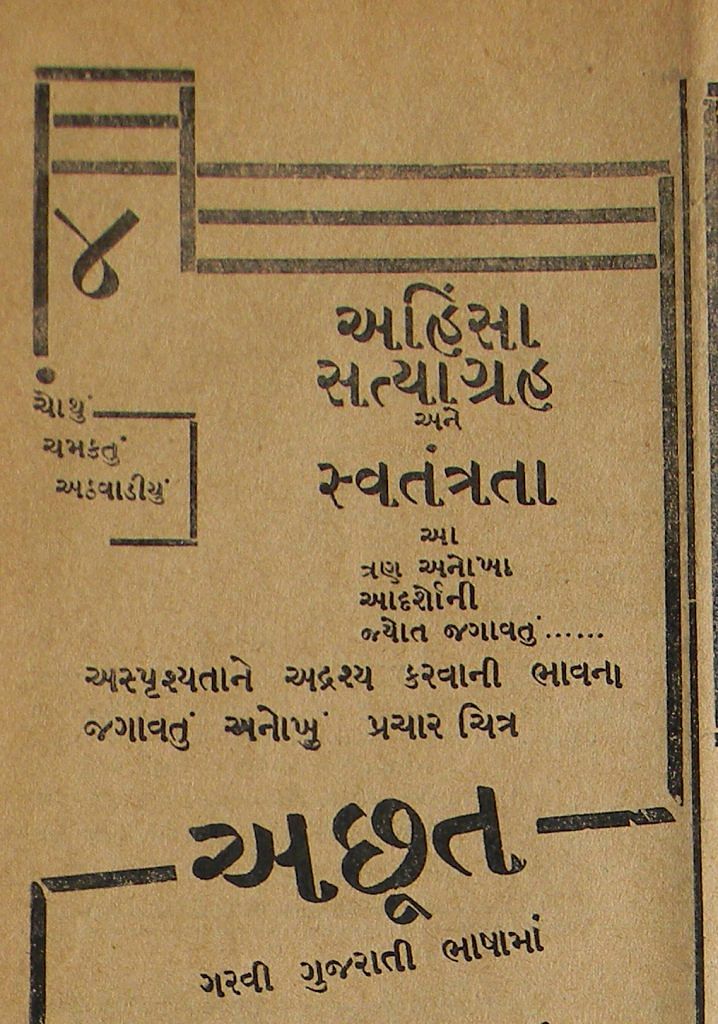
Gandhi himself never said anything about these film advertisements, but if his views on cinema were anything to go by, it is safe to say that he would not have approved of them.
The author is a senior columnist and writer based in Ahmedabad. Views are personal.
This is the first edition of the four-part series on Mahatma Gandhi ahead of his 150th birth anniversary. Read the second, third and fourth editions.


